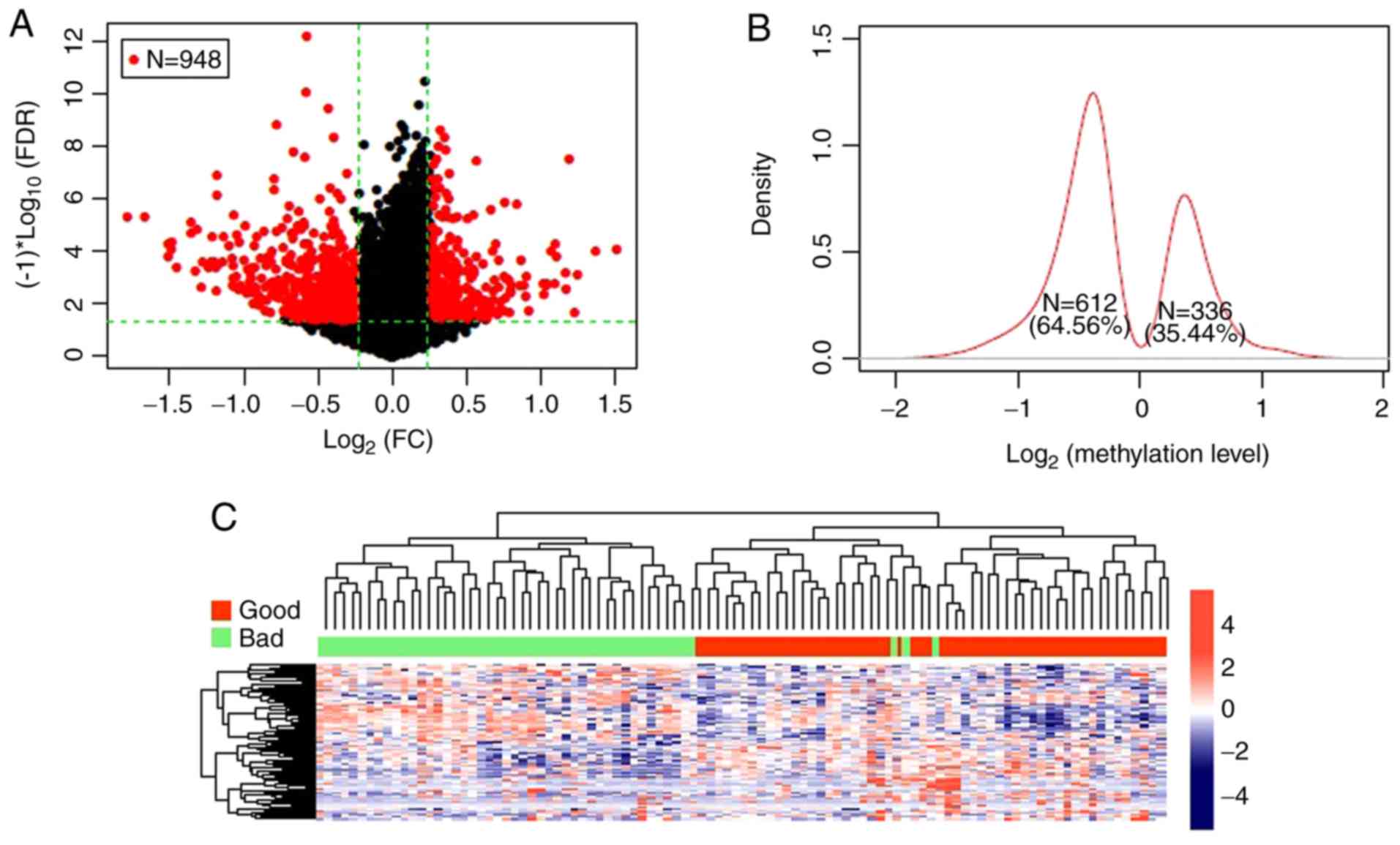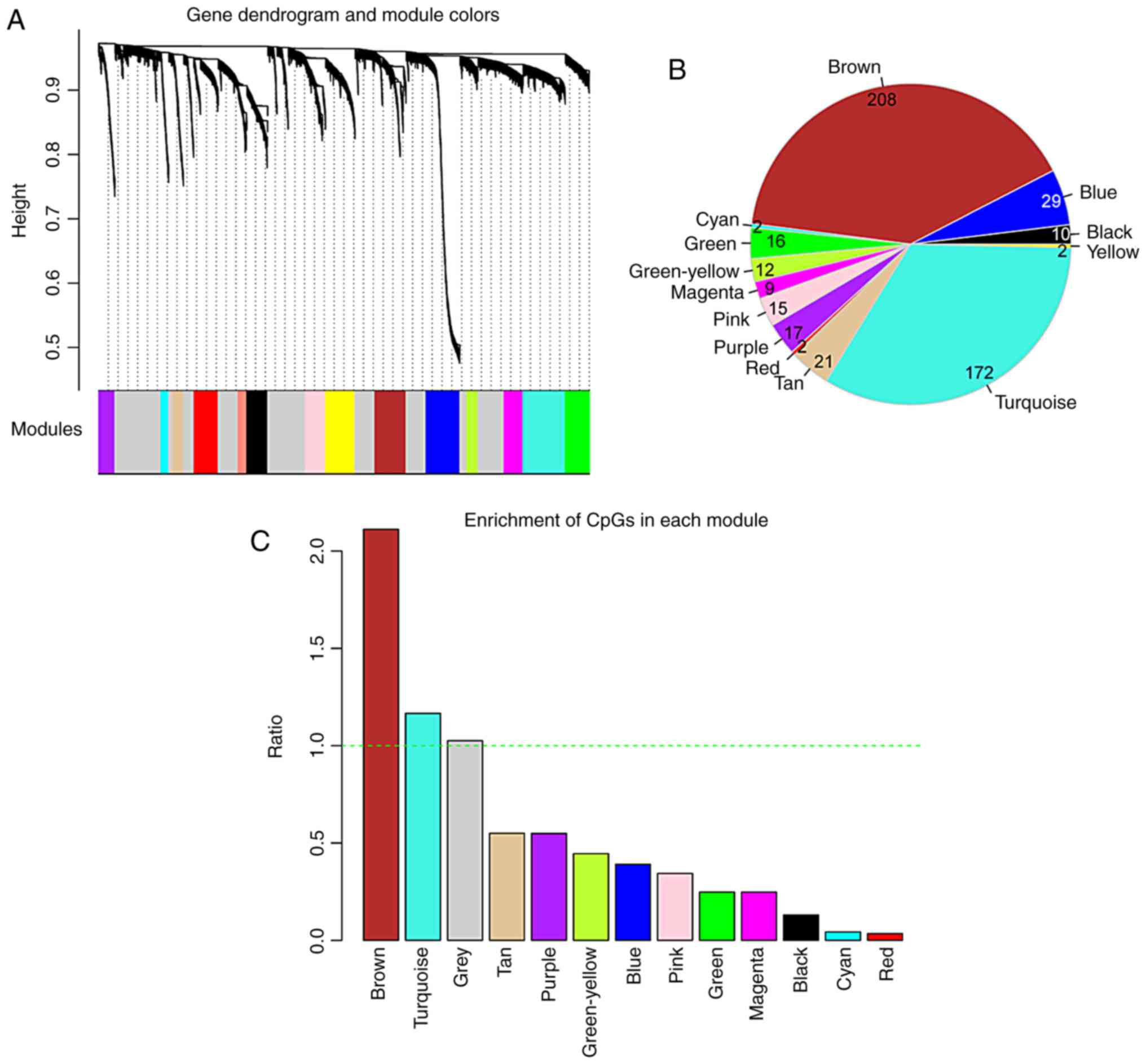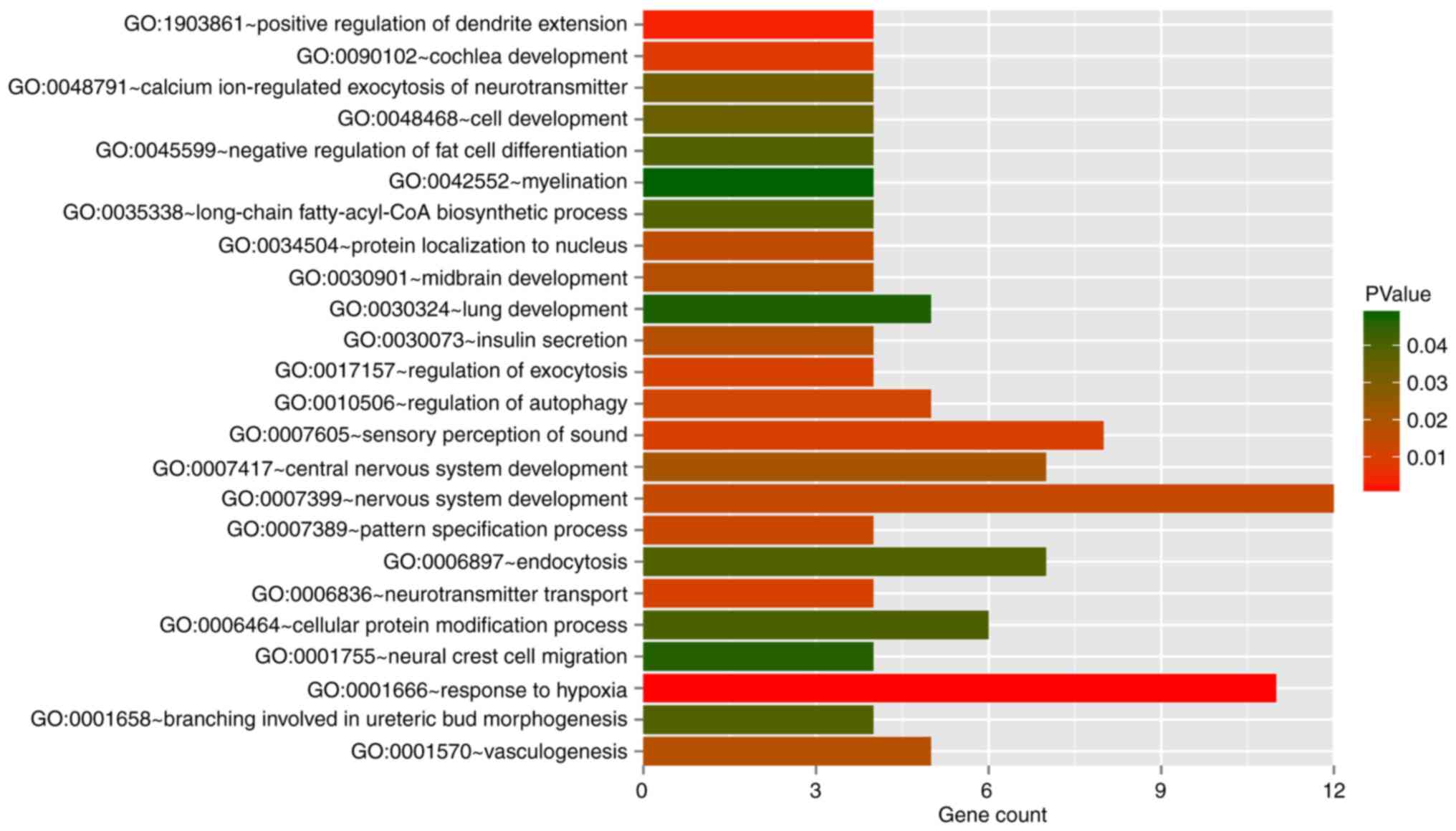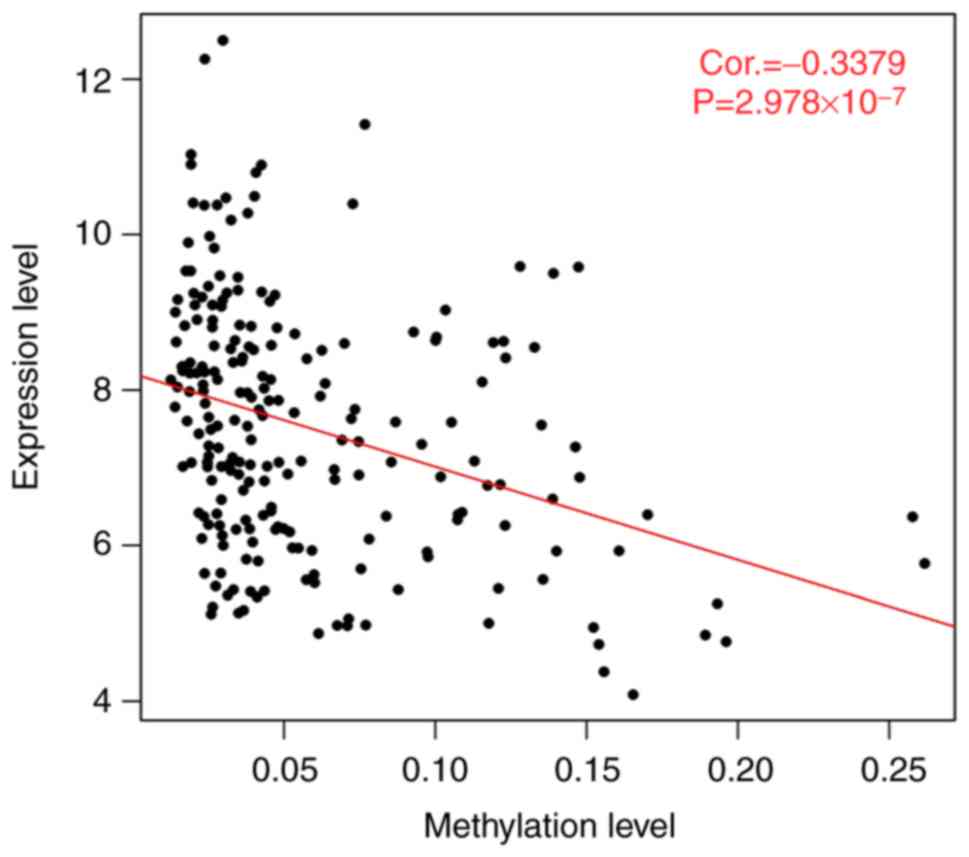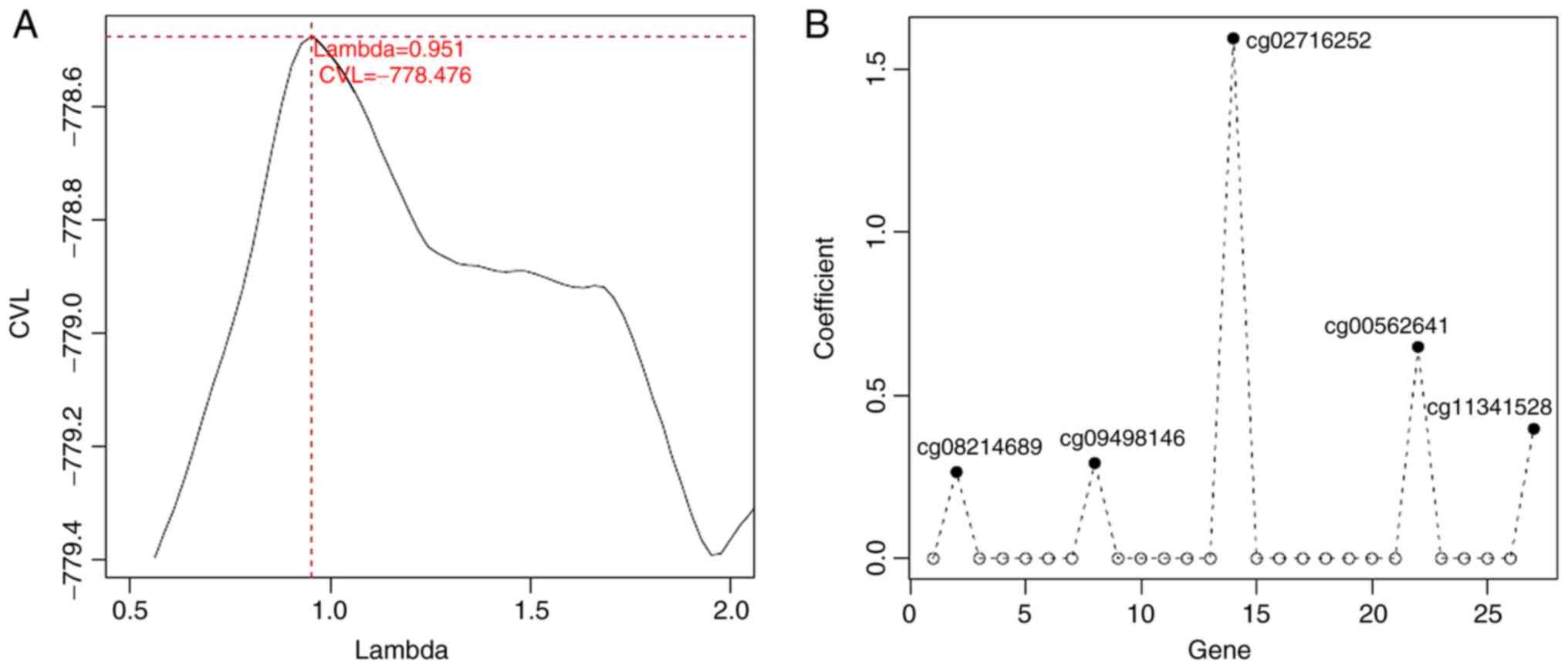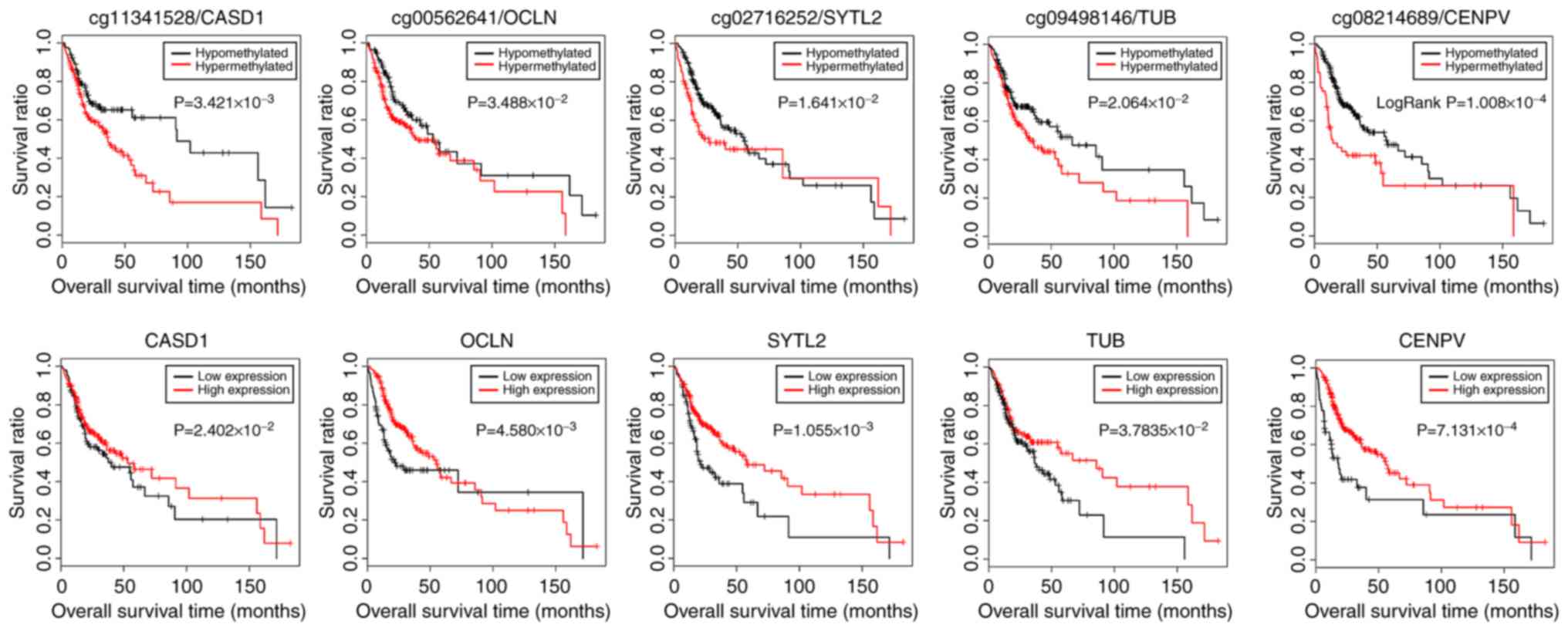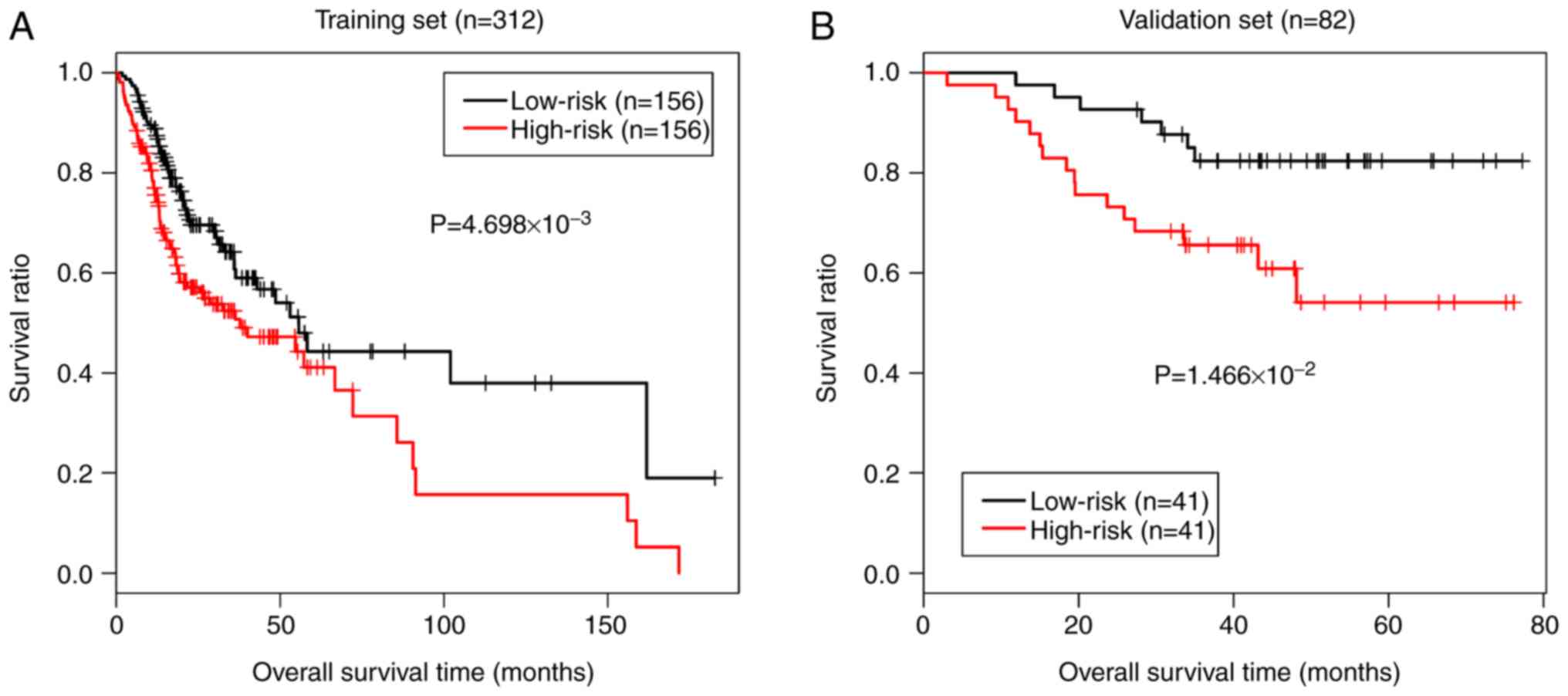|
1
|
Werning JW: Oral cancer: Diagnosis,
management, and rehabilitation. Thieme. 2007
|
|
2
|
World Health Organization (WHO):
International classification of diseases for oncology (ICD-O)-3rd
edition, 1st revision. Fritz A, Percy C, Jack A, Shanmugaratnam K,
Sobin L, Parkin DM and Whelan S: WHO; Geneva: 2013
|
|
3
|
Wu Y, Zhang L, Zhang L, Wang Y, Li H, Ren
X, Wei F, Yu W, Liu T, Wang X, et al: Long non-coding RNA HOTAIR
promotes tumor cell invasion and metastasis by recruiting EZH2 and
repressing E-cadherin in oral squamous cell carcinoma. Int J Oncol.
46:2586–2594. 2015. View Article : Google Scholar : PubMed/NCBI
|
|
4
|
Wikner J, Gröbe A, Pantel K and Riethdorf
S: Squamous cell carcinoma of the oral cavity and circulating
tumour cells. World J Clin Oncol. 5:114–124. 2014. View Article : Google Scholar : PubMed/NCBI
|
|
5
|
Siegel R, Ma J, Zou Z and Jemal A: Cancer
statistics, 2014. CA Cancer J Clin. 64:9–29. 2014. View Article : Google Scholar : PubMed/NCBI
|
|
6
|
Bhattacharya A, Roy R, Snijders AM,
Hamilton G, Paquette J, Tokuyasu T, Bengtsson H, Jordan RC, Olshen
AB, Pinkel D, et al: Two distinct routes to oral cancer differing
in genome instability and risk for cervical node metastasis. Clin
Cancer Res. 17:7024–7034. 2011. View Article : Google Scholar : PubMed/NCBI
|
|
7
|
Choo KB: Epigenetics in disease and
cancer. Malays J Pathol. 33:61–70. 2011.
|
|
8
|
Deng J, Liang H, Zhang R, Ying G, Xie X,
Yu J, Fan D and Hao X: Methylated CpG site count of dapper homolog
1 (DACT1) promoter prediction the poor survival of gastric cancer.
Am J Cancer Res. 4:518–527. 2014.PubMed/NCBI
|
|
9
|
Nakamura J, Tanaka T, Kitajima Y, Noshiro
H and Miyazaki K: Methylation-mediated gene silencing as biomarkers
of gastric cancer: A review. World J Gastroenterol. 20:11991–12006.
2014. View Article : Google Scholar : PubMed/NCBI
|
|
10
|
Nakayama S, Sasaki A, Mese H, Alcalde R,
Tsuji T and Matsumura T: The E-cadherin gene is silenced by CpG
methylation in human oral squamous cell carcinomas. Int J Cancer.
93:667–673. 2001. View
Article : Google Scholar : PubMed/NCBI
|
|
11
|
Rosas SL, Koch W, da Costa Carvalho MG, Wu
L, Califano J, Westra W, Jen J and Sidransky D: Promoter
hypermethylation patterns of p16,
O6-methylguanine-DNA-methyltransferase, and death-associated
protein kinase in tumors and saliva of head and neck cancer
patients. Cancer Res. 61:939–942. 2001.PubMed/NCBI
|
|
12
|
Gao S, Worm J, Guldberg P, Eiberg H,
Krogdahl A, Liu CJ, Reibel J and Dabelsteen E: Genetic and
epigenetic alterations of the blood group ABO gene in oral squamous
cell carcinoma. Int J Cancer. 109:230–237. 2004. View Article : Google Scholar : PubMed/NCBI
|
|
13
|
Delpu Y, Cordelier P, Cho W and Torrisani
J: DNA methylation and cancer diagnosis. Int J Mol Sci.
14:15029–15058. 2013. View Article : Google Scholar : PubMed/NCBI
|
|
14
|
Zhang C, Zhao H, Li J, Liu H, Wang F, Wei
Y, Su J, Zhang D, Liu T and Zhang Y: The identification of specific
methylation patterns across different cancers. PLoS One. 10:pp.
e01203612015, View Article : Google Scholar : PubMed/NCBI
|
|
15
|
Tomczak K, Czerwińska P and Wiznerowicz M:
The Cancer Genome Atlas (TCGA): An immeasurable source of
knowledge. Contemp Oncol (Pozn). 19:pp. A68–A77. 2015
|
|
16
|
Ritchie M, Phipson B, Wu D, Hu Y, Law CW,
Shi W and Smyth GK: Limma powers differential expression analyses
for RNA-sequencing and microarray studies. Nucleic Acids Res.
43:pp. e472015, View Article : Google Scholar : PubMed/NCBI
|
|
17
|
Langfelder P and Horvath S: WGCNA: An R
package for weighted correlation network analysis. BMC
Bioinformatics. 9:5592008. View Article : Google Scholar : PubMed/NCBI
|
|
18
|
Huang da W, Sherman B and Lempicki R:
Bioinformatics enrichment tools: Paths toward the comprehensive
functional analysis of large gene lists. Nucleic Acids Res.
37:1–13. 2009. View Article : Google Scholar
|
|
19
|
Huang da W, Sherman B and Lempicki R:
Systematic and integrative analysis of large gene lists using DAVID
bioinformatics resources. Nat Protoc. 4:44–57. 2009. View Article : Google Scholar : PubMed/NCBI
|
|
20
|
Zou K, Tuncali K and Silverman SG:
Correlation and simple linear regression. Radiology. 227:617–622.
2003. View Article : Google Scholar : PubMed/NCBI
|
|
21
|
Wang P, Wang Y, Hang B, Zou X and Mao J: A
novel gene expression-based prognostic scoring system to predict
survival in gastric cancer. Oncotarget. 7:55343–55351.
2016.PubMed/NCBI
|
|
22
|
Tibshirani R: The lasso method for
variable selection in the Cox model. Stat Med. 16:385–395. 1997.
View Article : Google Scholar : PubMed/NCBI
|
|
23
|
Goeman JJ: L1 penalized estimation in the
Cox proportional hazards model. Biom J. 52:70–84. 2010.
|
|
24
|
Shahraki HR, Salehi A and Zare N: Survival
prognostic factors of male breast cancer in southern Iran: A
LASSO-Cox regression approach. Asian Pac J Cancer Prev.
16:6773–6777. 2015. View Article : Google Scholar : PubMed/NCBI
|
|
25
|
Goel MK, Khanna P and Kishore J:
Understanding survival analysis: Kaplan-Meier estimate. Int J
Ayurveda Res. 1:274–278. 2010. View Article : Google Scholar
|
|
26
|
Győrffy B, Bottai G, Fleischer T, Munkácsy
G, Budczies J, Paladini L, Børresen-Dale AL, Kristensen VN and
Santarpia L: Aberrant DNA methylation impacts gene expression and
prognosis in breast cancer subtypes. Int J Cancer. 138:87–97. 2016.
View Article : Google Scholar
|
|
27
|
Fukuda M, Saegusa C and Mikoshiba K: Novel
splicing isoforms of synaptotagmin-like proteins 2 and 3:
Identification of the Slp homology domain. Biochem Biophys Res
Commun. 283:513–519. 2001. View Article : Google Scholar : PubMed/NCBI
|
|
28
|
Fukuda M: Rab27 and its effectors in
secretory granule exocytosis: A novel docking machinery composed of
a Rab27.effector complex. Biochem Soc Trans. 34:691–695. 2006.
View Article : Google Scholar : PubMed/NCBI
|
|
29
|
Yasuda T, Saegusa C, Kamakura S, Sumimoto
H and Fukuda M: Rab27 effector Slp2-a transports the apical
signaling molecule podocalyxin to the apical surface of MDCK II
cells and regulates claudin-2 expression. Mol Biol Cell.
23:3229–3239. 2012. View Article : Google Scholar : PubMed/NCBI
|
|
30
|
Ho JR, Chapeaublanc E, Kirkwood L, Nicolle
R, Benhamou S, Lebret T, Allory Y, Southgate J, Radvanyi F and Goud
B: Deregulation of Rab and Rab effector genes in bladder cancer.
PLoS One. 7:pp. e394692012, View Article : Google Scholar : PubMed/NCBI
|
|
31
|
Sung HY, Han J, Ju W and Ahn JH:
Synaptotagmin-like protein 2 gene promotes the metastatic potential
in ovarian cancer. Oncol Rep. 36:535–541. 2016. View Article : Google Scholar : PubMed/NCBI
|
|
32
|
Rachow S, Zorn-Kruppa M, Ohnemus U,
Kirschner N, Vidal-y-Sy S, von den Driesch P, Börnchen C, Eberle J,
Mildner M, Vettorazzi E, et al: Occludin is involved in adhesion,
apoptosis, differentiation and Ca2+-homeostasis of human
keratinocytes: Implications for tumorigenesis. PLoS One. 8:pp.
e551162013, View Article : Google Scholar : PubMed/NCBI
|
|
33
|
Tobioka H, Isomura H, Kokai Y, Tokunaga Y,
Yamaguchi J and Sawada N: Occludin expression decreases with the
progression of human endometrial carcinoma. Hum Pathol. 35:159–164.
2004. View Article : Google Scholar : PubMed/NCBI
|
|
34
|
Sehrawat A and Singh SV: Benzyl
isothiocyanate inhibits epithelial-mesenchymal transition in
cultured and xenografted human breast cancer cells. Cancer Prev Res
(Phila). 4:pp. 1107–1117. 2011, View Article : Google Scholar
|
|
35
|
Orbán E, Szabó E, Lotz G, Kupcsulik P,
Páska C, Schaff Z and Kiss A: Different expression of occludin and
ZO-1 in primary and metastatic liver tumors. Pathol Oncol Res.
14:299–306. 2008. View Article : Google Scholar : PubMed/NCBI
|
|
36
|
Martin TA, Mansel RE and Jiang WG: Loss of
occludin leads to the progression of human breast cancer. Int J Mol
Med. 26:723–734. 2010. View Article : Google Scholar : PubMed/NCBI
|
|
37
|
Tobioka H, Tokunaga Y, Isomura H, Kokai Y,
Yamaguchi J and Sawada N: Expression of occludin, a
tight-junction-associated protein, in human lung carcinomas.
Virchows Arch. 445:472–476. 2004. View Article : Google Scholar : PubMed/NCBI
|
|
38
|
Osanai M, Murata M, Nishikiori N, Chiba H,
Kojima T and Sawada N: Epigenetic silencing of occludin promotes
tumori-genic and metastatic properties of cancer cells via
modulations of unique sets of apoptosis-associated genes. Cancer
Res. 66:9125–9133. 2006. View Article : Google Scholar : PubMed/NCBI
|
|
39
|
Baumann AM, Bakkers MJ, Buettner FF,
Hartmann M, Grove M, Langereis MA, de Groot RJ and Mühlenhoff M:
9-O-Acetylation of sialic acids is catalysed by CASD1 via a
covalent acetyl-enzyme intermediate. Nat Commun. 6:76732015.
View Article : Google Scholar : PubMed/NCBI
|
|
40
|
Mandal C and Mandal C, Chandra S, Schauer
R and Mandal C: Regulation of O-acetylation of sialic acids by
sialate-O-acetyltransferase and sialate-O-acetylesterase activities
in childhood acute lymphoblastic leukemia. Glycobiology. 22:70–83.
2012. View Article : Google Scholar
|
|
41
|
Zheng Y, Zhou J and Tong Y: Gene
signatures of drug resistance predict patient survival in
colorectal cancer. Pharmacogenomics J. 15:135–143. 2015. View Article : Google Scholar :
|
|
42
|
Zhang C, Han Y, Huang H, Min L, Qu L and
Shou C: Integrated analysis of expression profiling data identifies
three genes in correlation with poor prognosis of triple-negative
breast cancer. Int J Oncol. 44:2025–2033. 2014. View Article : Google Scholar : PubMed/NCBI
|
|
43
|
Qiu JJ, Guo JJ, Lv TJ, Jin HY, Ding JX,
Feng WW, Zhang Y and Hua KQ: Prognostic value of centromere
protein-A expression in patients with epithelial ovarian cancer.
Tumor Biol. 34:2971–2975. 2013. View Article : Google Scholar
|
|
44
|
Sun X, Clermont PL, Jiao W, Helgason CD,
Gout PW, Wang Y and Qu S: Elevated expression of the centromere
protein-A (CENP-A)-encoding gene as a prognostic and predictive
biomarker in human cancers. Int J Cancer. 139:899–907. 2016.
View Article : Google Scholar : PubMed/NCBI
|
|
45
|
Zhuo YJ, Xi M, Wan YP, Hua W, Liu YL, Wan
S, Zhou YL, Luo HW, Wu SL, Zhong WD and Wu CL: Enhanced expression
of centromere protein F predicts clinical progression and prognosis
in patients with prostate cancer. Int J Mol Med. 35:966–972. 2015.
View Article : Google Scholar : PubMed/NCBI
|
|
46
|
Shigeishi H, Higashikawa K, Ono S, Mizuta
K, Ninomiya Y, Yoneda S, Taki M and Kamata N: Increased expression
of CENP-H gene in human oral squamous cell carcinomas harboring
high-proliferative activity. Oncol Rep. 16:1071–1075.
2006.PubMed/NCBI
|
|
47
|
Carroll K, Gomez C and Shapiro L: Tubby
proteins: The plot thickens. Nat Rev Mol Cell Biol. 5:55–63. 2004.
View Article : Google Scholar : PubMed/NCBI
|















